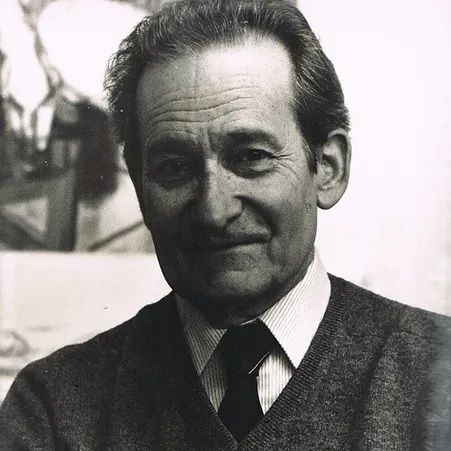Marcel Salinas was born in Alexandria in 1913 of a French mother and an Italian father. He received an education befitting a member of the cosmopolitan Alexandrian elite of which he was a member, traveling extensively and studying law in Aix-en-Provence. However, his real passion was painting, and early twentieth century Alexandria had a number of studios where a young person with artistic leanings could hone their talent under the guidance of expatriate European artists.
Salinas spent his early adult years between France and Egypt. He exhibited frequently at the Alexandria Atelier alongside Egyptian artists such as Mahmud Said and Muhammad Nagi. Following the 1952 revolution and the Suez Canal crisis, life became increasingly difficult for foreigners residing in Egypt and many of them were expelled and their assets seized. Marcel’s mother and stepfather, like many others, left the country.
Those who knew him well remember him as an astute and compelling critic, always ready to pause in front of a painting and discuss at great length the visual choices made by the artist. It seems that Salinas was simply enamored with painting, old and new. To him, the same basic principles continued to hold true throughout the ages: painting was about form, color, and technique. It required hard work and hard looking.
In the late 1950s, exiled in Paris and desperate for money, Salinas got a job in a lithography workshop. He rapidly became an expert in the medium. He brought to lithography the same passion and rigor that were the mark of his painting. In 1969, he began work on a lithographic rendition of Picasso’s 29 Portraits Imaginaires for the Editions Cercle d’Art that would receive the master’s whole-hearted approval, making Salinas’ name the only one ever to appear side by side with Picasso’s.
Salinas continued to paint throughout the last decades of his life, spent between Paris and New York, and between Brussels and St Louis. His prolific output as a painter falls mostly into three categories: landscapes, nudes, and still-lives. While he toyed at various times in his life with different stylistic paradigms, including those of cubism and fauvism, ultimately, Salinas’ commitment was to the poetry of light, color, and form as they were brought to bear on the representation of people, places, and objects. Salinas died in 2010.

